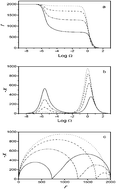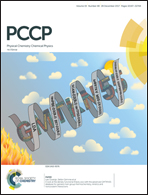Theoretical interpretation of Warburg's impedance in unsupported electrolytic cells
Abstract
We discuss the origin of Warburg's impedance in unsupported electrolytic cells containing only one group of positive and one group of negative ions. Our analysis is based on the Poisson–Nernst–Planck model, where the generation-recombination phenomenon is neglected. We show that to observe Warburg-like impedance the diffusion coefficient of the positive ions has to differ from that of the negative ones, and furthermore the electrodes have to be not blocking. We assume that the non-blocking properties of the electrodes can be described by means of an Ohmic model, where the charge exchange between the cell and the external circuit is described by means of an electrode conductivity. For simplicity we consider a symmetric cell. However, our analysis can be easily generalized to more complicated situations, where the cell is not symmetric and the charge exchange is described by the Chang–Jaffe model, or by a linearized version of the Butler–Volmer equation. Our analysis allows justification of the expression for Warburg's impedance proposed previously by several groups, based on wrong assumptions.



 Please wait while we load your content...
Please wait while we load your content...